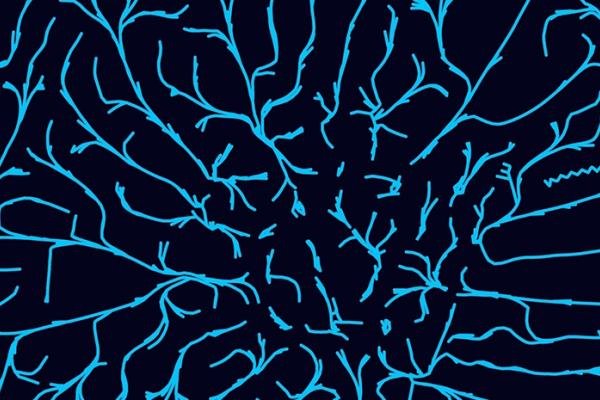Personalised medicine will save people from unnecessary treatment – Dr Daniela Thorwarth
She is helping to develop personalised treatments for head and neck cancer and is speaking about the future of the field at the European Science Open Forum (ESOF) in Manchester, UK, which runs from 23 to 27 July.
There is a lot of buzz around personalised medicine at the moment, but what specifically are we talking about?
‘Personalised medicine, in my view, is diagnosis and treatment of a disease in a way that is very much focused on the patient’s specific needs.
‘We can use all the new technologies we have in terms of gene sequencing, gene analysis and analysing the output of genes in the body, to better understand the characteristics of a patient’s disease, learn about where this disease really originates from and what would be the best approach to cure or treat it. We also have other methods that can be very helpful for personalised strategies, which may be not as demanding (as genetic approaches). Molecular imaging – where we can view biological processes at the molecular level - is one way, but also a very new approach is in sensor systems. You implant a small chip into a patient that monitors a variety of factors like blood pressure, heart rate, etc., and you can have early indicators of disease at very early stages where the patient himself does not feel ill at all.
‘There is also a component of personalised medicine going much more into the prevention aspect. On a very personalised basis, recommendations can be made on how to prevent certain diseases.’
So the idea is that by using a treatment suited to that particular person and their disease, we can increase cure rates?
‘Yes, but our hope for the patient is also that before we decide on his or her individual treatment option, we can stratify those patients into different risk groups. One group is the patients where we think an intense treatment option would give them a higher probability of being cured. But another group could be those patients who at this moment probably cannot be cured, to save them from unnecessary treatments with intense side effects.’
You’re specifically looking at head and neck cancer as part of the bio-iRT project, funded by the EU’s European Research Council. Why?
‘We chose to study head and neck cancer because it is a model system. It is not one of the biggest cancer incidences in Europe but it is a very aggressive type of cancer and quite a part of the population is suffering from it. This is a type of cancer where, at this very moment, combination therapies are extensively used in the clinics, so these are patients who get focused radiotherapy in parallel to high-level chemotherapy. And still we see that even with this state-of-the-art therapy we can only cure half of these patients. And we essentially do not know why.’
How are you going about identifying a personalised treatment?
‘We are looking into the biology of those tumours with genetic approaches but also with molecular imaging, where we use traceable substances known as biomarkers that interact chemically with the tumour to see what is happening on a very small scale. Molecular imaging has the advantage that we can use it in the clinics non-invasively, so with no pain or harm for the patients. We are studying this disease in a very basic research setting with modern hybrid imaging technologies, which combine different types of imaging techniques to get a really clear picture of what’s going on. Then we are analysing the tumours with genetic approaches in order to find correlations or patterns that might be driving the resistance of a patient’s tumour to therapy.
“‘Within the next five to 10 years we should be able to treat a quarter of our patients with personalised strategies.’
‘This is where we see a big chance for radiotherapy. Radiotherapy has the big advantage that it is a local therapy option, so we can focus the radiation dose on the tumour and increase the dose to the resistant parts of the tumour. We have started a clinical trial in Tübingen using a very basic approach and some imaging biomarkers identified in earlier studies, to test this approach in a personalised manner, increasing the radiation treatment dose to more resistant areas inside the tumour which were identified with this imaging biomarker.’
How long will it be before this type of approach is commonplace?
‘I think that our goal should be – and this is our specific goal for the department in Tübingen – that within the next five to 10 years we should be able to treat a quarter of our patients with personalised strategies.’
Can personalised medicine be used to treat any type of disease or just cancer?
‘It is applicable to all diseases. Here at Tübingen we have founded a centre of personalised medicine that covers cancer of course, but also infectious diseases and haematological and brain diseases. It is a whole spectrum where personalised medicine can be used and can be useful.’
What’s the biggest challenge?
‘I think the challenging points are still very much in the basic field. We still do not know for a lot of diseases what the key factors will be that in the end drive the personalised diagnosis and other therapy approaches. In my project I try to find key factors that will distinguish if a cancer patient can be cured or not, or if we need personalised therapy options. The diagnosis will be personalised, but also then based on that there is a second step, the therapy.
‘What I would like to see next is to really make steps into making personalised medicine happen, to create teams with expertise - from basic scientists to clinicians, and from different fields - ... in order to start studies, prove that the concept is working, and that we can really help the patients to a better quality of life and also (get) better cure rates in different diseases.’




